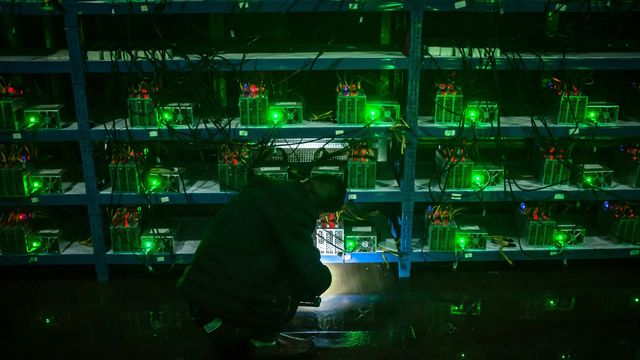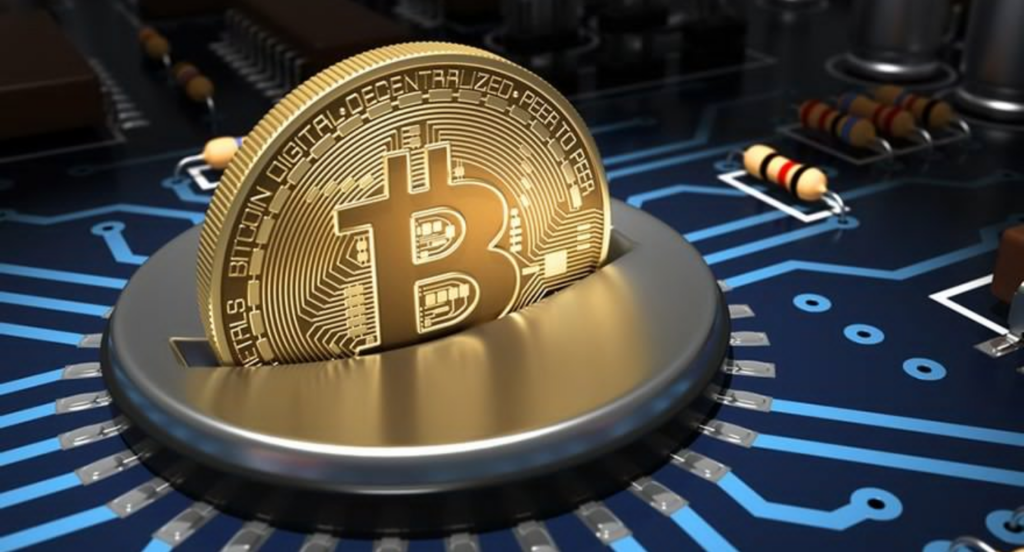IS IT NO LONGER AN ALTERNATIVE?
The crypto-winter has caused digital currencies to lose about a third of their value, something that has happened before. The real disappointment is that they have failed to provide a safe haven from inflation and falling stock markets.
It is now almost a mathematical matter. When US central banks and regulators make announcements or forecasts, tens of thousands of bitcoin wallets put their finger on the trigger: it is time to sell or, as the case may be, buy. The latest episode was last Friday, when new higher-than-expected US inflation data was released. The drums of an interest rate hike by the Federal Reserve sounded once again loudly and, minutes later, bitcoin fell below 19,000 dollars. This is not the first time this has happened, and nothing suggests it will be the last.
It is one of the main consequences of the so-called cryptowinter, which has caused these digital currencies to lose a third of their value in just under a year. And that is surely not the worst of it, at least for the most enthusiastic of this technology. The fact that they have tied their course to the ups and downs of the conventional economy has also meant that they have lost the opportunity to become digital gold. That is to say, a refuge for when the lean times come, something that was one of bitcoin’s founding promises and, also, one of its main claims until not so long ago.
How the alternative lost its own way
For now, the correlation has been mainly between the S&P 500 index and bitcoin, which in turn is leading the way for the rest of the cryptocurrencies. “It is behaving in the same way as the stock market indices because its penetration and critical mass have not been sufficient for it to be an alternative security”, explains Fernando Castelló Sirvent, economist and professor at ESIC, who wonders about its current purpose, as “an investor tries to hedge with complementary instruments”. In other words, they prefer to have eggs in several baskets, but with an inverse correlation between them, so that if one goes wrong, another one goes right almost automatically. “If everything moves in the same direction, the risk you take is greater and greater.
This economist also explains that one of the causes is that the profile of those who put their money into this sector has changed, with major investment funds such as Sequoia Capital and Andreessen Horowitz (a16z) having entered the sector. “It is not difficult to think that those who invest in crypto now used to invest in the S&P 500,” he says, stressing that they have entered this market “with the same expectations as in a traditional one and in the same contexts: when many have wanted to sell on the stock market, they have also done so with their bitcoins”.
Herminio Fernandez, CEO of crypto firm EurocoinPay, comments:

A couple of years ago, everything started to be speculation. Coinbase decided to go public, Elon Musk started to talk about bitcoin…. There was a “pull effect” that triggered speculation. In addition, many bitcoins were in cold “wallets”, so they were not traded and there was no resistance to selling. All this meant that the peak was reached within a few months.
In his opinion, the entry of more traditional investors is not the only thing that explains the correlation.
A lot of uneducated and untrained people came in to speculate. They were not professionals, and that made them panic when they saw the rest of the markets.
Goodbye to digital bullion?
One of the founding promises of bitcoin, and the reason that attracted many of its precursors, was the creation of an alternative economic system to traditional finance, without intermediaries. One of its main characteristics is that it works with a scarce and finite resource, which is not the case with regulated money, which is constantly growing. Here, on the other hand, there can only be 21 million bitcoins in circulation, which are extracted (mined) little by little, which led many to predict that it was going to be the digital gold. In fact, for years it operated independently of other markets, something that now seems difficult to maintain.

A bitcoin miner in China, before the ban on bitcoin mining in the country. (EFE/EPA/Liu Xingzhe)
“In the initial philosophy of bitcoin, there was an approach that was long-term investment, being an alternative asset to other large safe-haven securities”, Sirvent points out on this point, where he establishes a fundamental difference between the bitcoin diehards – the so-called maximalists – and the rest. “Some see the advantages in the long term, but the others in the short term. The maximalists may be many people, but quantitatively they do not weigh so much in the market, which is weighted according to who has the most bitcoins”, recalls this economist, who does not believe that the process will be reversed. “A lot of things would have to happen, and that is entering the realm of economics fiction”, he suggests.
At EurocoinPay, they argue that the future of bitcoin lies more in its function as a means of payment than in having its own alternative path. “It used to be an unregulated haven that governments didn’t even mention, but it has become so important that they are not going to let it go unchecked. There are more and more institutional investors and the new European regulation, MiCa, is going to give it a very important boost,” he explains, emphasising that “it’s a way of preventing it from becoming full of fraudsters and criminals, which is counterproductive“. However, he also believes that “the influence is not going to be one-way, but that the traditional market is going to be significantly influenced by cryptocurrencies through technology. “There is going to be a transfer from the financial system to the blockchain,” he argues.
A warning of things to come
Bitcoin has been sitting between $19,000 and $23,000 since early summer, which is good news for its adoption as a payment instrument – at least if it stays that way for a while – but there is one indicator that has raised some concern. That drop in volatility has been accompanied by a plunge in trading volume, which has almost halved, according to CoinMarket, and that may cause it to take another downward lurch. “There is less liquidity in crypto and therefore more difficulty in selling, so it is more difficult to exit these markets. I don’t know if this is a warning sign, but it is something to bear in mind, because it lowers expectations,” warns Castelló, of ESIC.
“The portfolios with the most bitcoins are those that are accumulating the most because they are preparing for a long run“, comments Fernández, of EurocoinPay, who points out that “there are investment funds that are pushing the price down to between 13,000 and 14,000 dollars“. “It’s a way to buy cheap and have control, because when it drops to that amount there will be a huge demand to buy,” he says.
The most striking thing about all this is that it has also led to some paper trading. According to JP Morgan’s Global FX Volatility Index – reported by Bloomberg – stock market volatility has soared 70% this year, while bitcoin’s volatility has fallen 11% in the third quarter. This has meant that, while many traditional investors have switched to cryptocurrencies, others have had to take the opposite route. This is the case of MakerDAO, the decentralised organisation behind the DAI stablecoin, the fourth most widespread.
A few weeks ago, they announced that they would invest $500 million in short-term US Treasury bonds, as well as corporate bonds. This is money coming out of escrow to back their digital currency, which they now see as safer in US currency. The decision, by the way, was overwhelmingly approved by its community, which is quite a departure from the philosophy of such organisations. In fact, the founder, Rune Christensen, had said weeks earlier that he did not want to have assets that could be confiscated if any government put them on its sanctions blacklist. Now it seems that the risk is different.
Disclaimer: The information set out herein should not be taken as financial advice or investment recommendations. All investments and trading involve risk and it is the responsibility of each individual to do their due diligence before making any investment decision.
Source: El Confidencial




